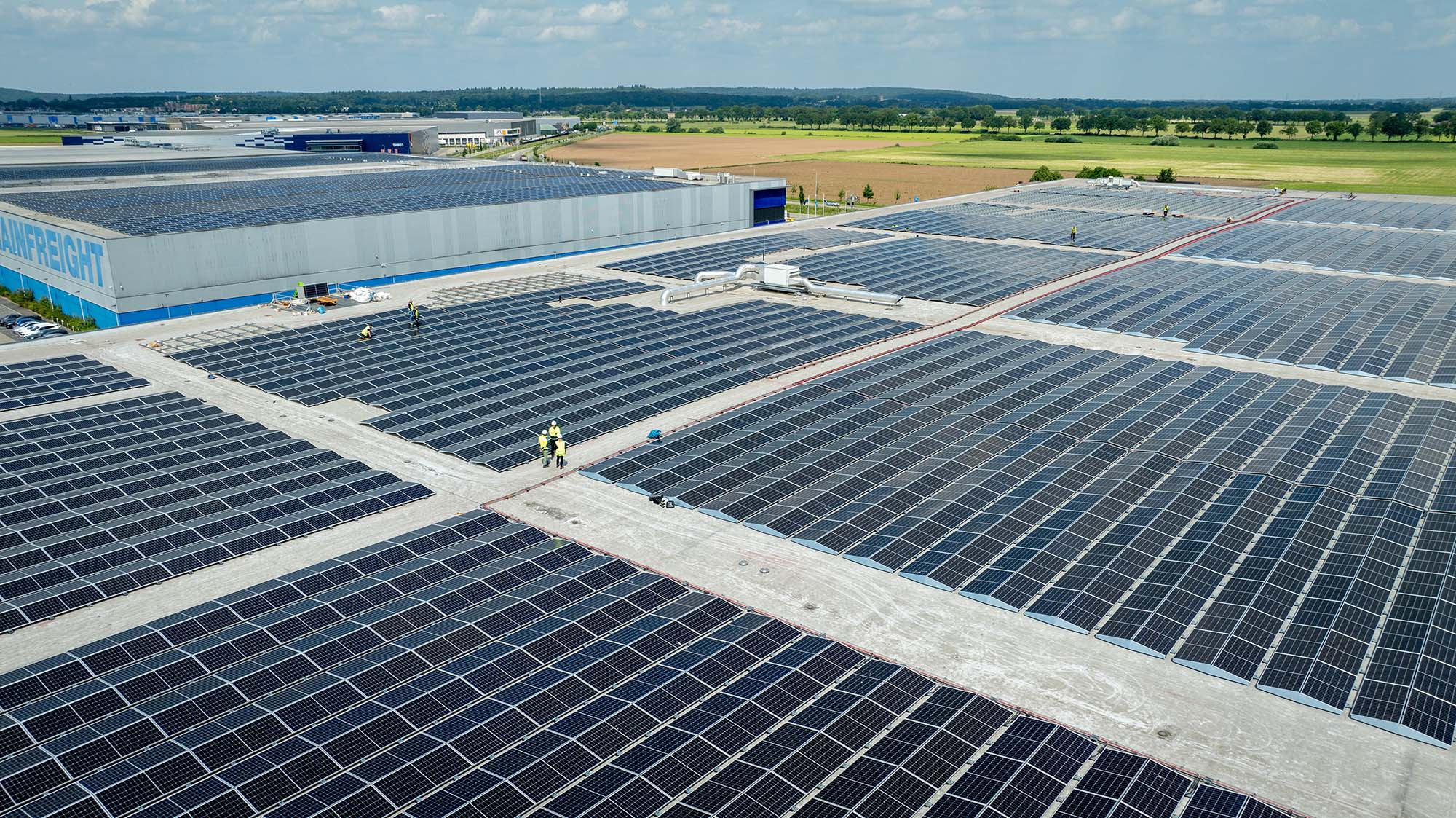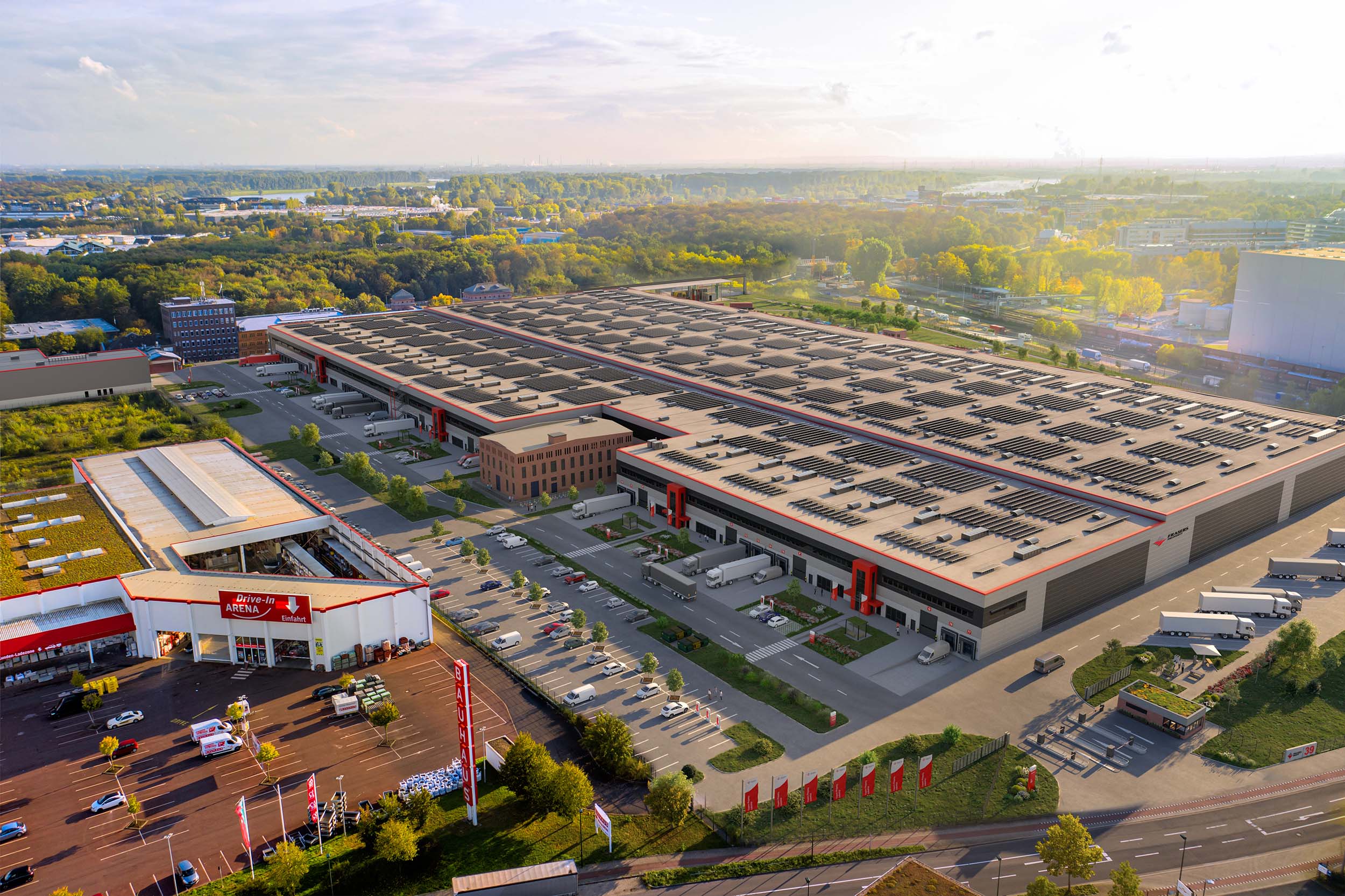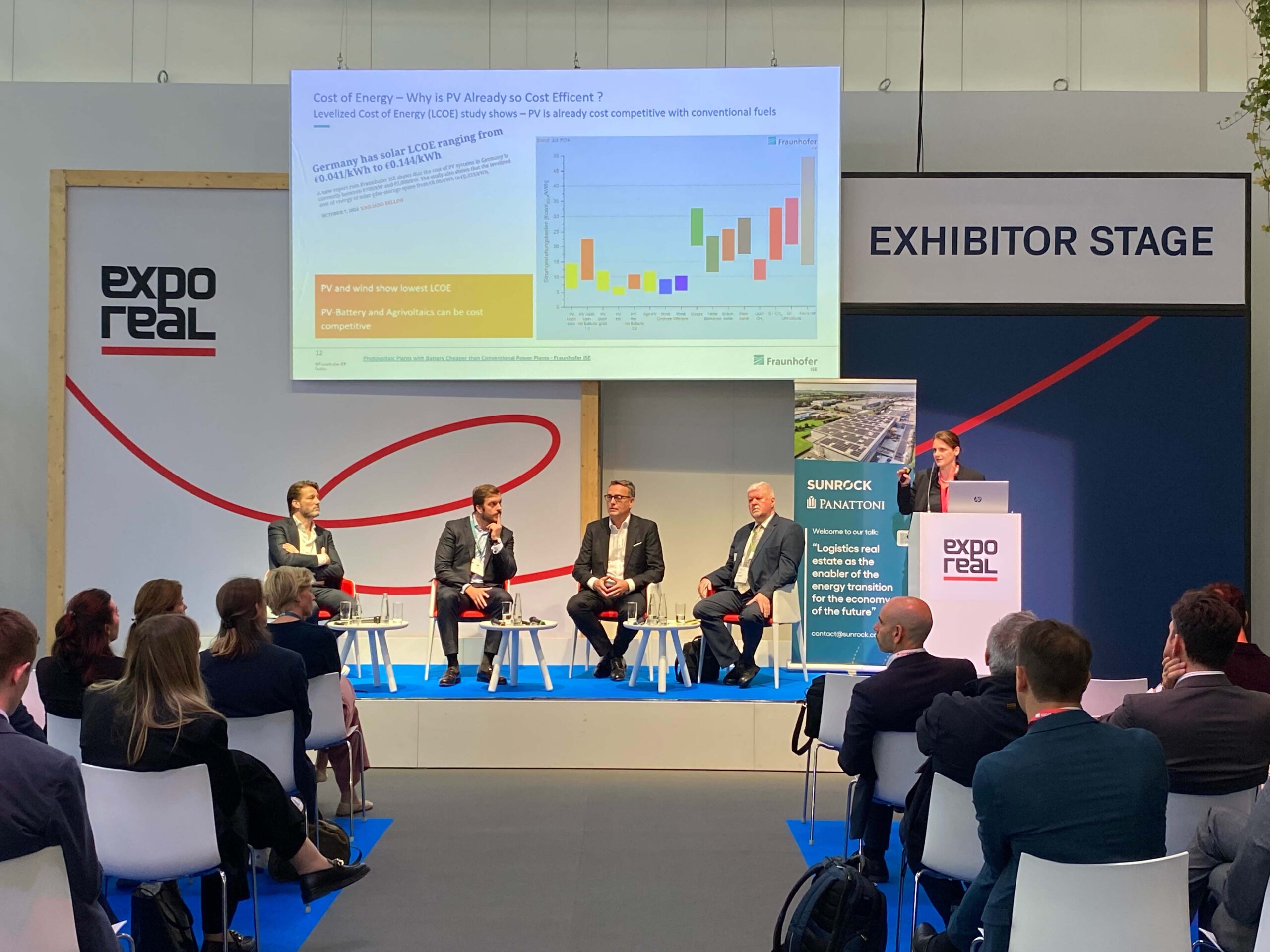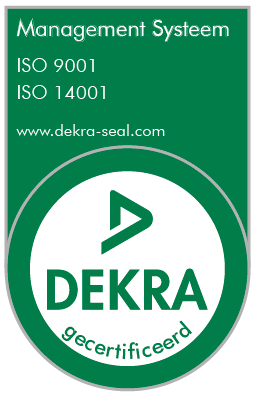The energy transition makes the production of more solar energy and the introduction of sustainable mobility inevitable, but it is not yet so easy for the users of buildings to find the right balance between supply and demand. Prologis and Sunrock are trying out innovative energy solutions. In the development of DC 5 in Tilburg, they opted for a special experiment: storage of solar power in a huge battery.
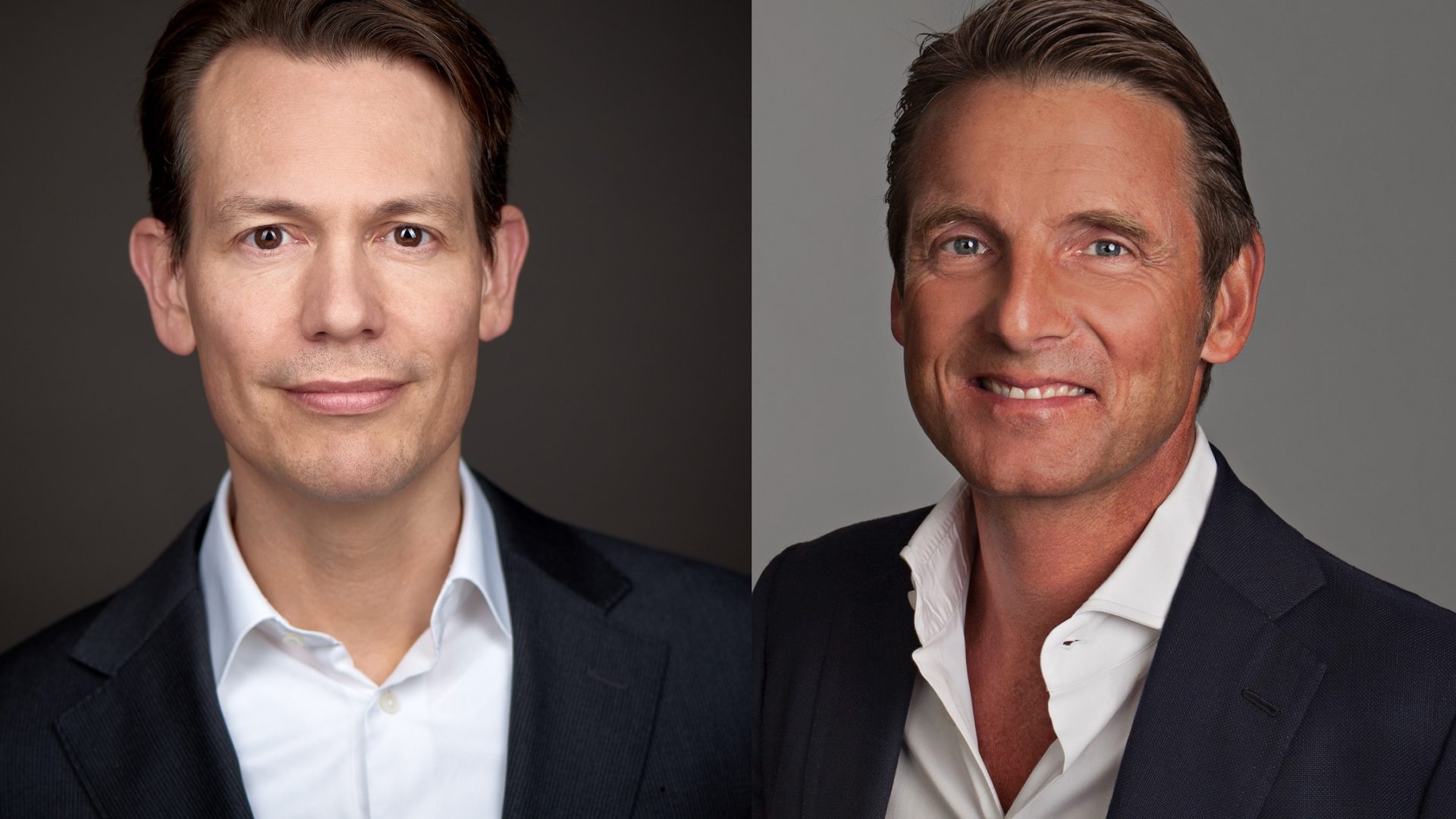
For Sander Breugelmans, Regional Head of Europe at Prologis, the pursuit of sustainable logistics property is a logical choice. “As the largest developer and owner of logistics property in the Netherlands, we expressly take our responsibility; Prologis wants to be a good citizen. In our investments, we opt for circular buildings, the enhancement of biodiversity in the vicinity of our buildings and renewable energy. Distribution centres have large roofs; they are ideally suited to the installation of solar panels. He does have one comment, however. “Sometimes such an operation is too complex. Older buildings don’t always have the right construction, but we still manage to generate more energy every year through new construction and modification of existing roofs, such as covering buildings.”
Smart solutions
When it comes to sun as a source of energy, Prologis works closely with Sunrock, a young, fast-growing company that provides smart energy solutions with solar parks on logistics and commercial properties. “At our start, we focused on the large real estate parties and on understanding their demand. We are very transparent about the costs and revenues involved in developing and managing such an energy plant. Sunrock has now built up a portfolio of 1.4 gigawatt-peak projects. This makes us the market leader when it comes to covering large roofs with solar panels and realising energy solutions. Not all of those projects will come to fruition; not all roofs are suitable for the installation of solar panels,” says Maurits van Oranje.
He cherishes the collaboration with Prologis. “In 2016, our company then consisted of only five or six people, we won a tender from Prologis for two roofs, among which was the roof of Cool Blue’s distribution centre. A much broader collaboration has resulted from that. Three years ago, we applied for subsidies for all their roofs, with the intention of developing solar parks together. That is working out well. Our teams are professional, highly motivated and have a click with each other. And we do what we promised back then: to unburden our partner in the field of renewable energy. Sander Breugelmans points to a second challenge. “Our buildings are leased. We want to motivate our tenants to make use of the available energy. We can’t tell that story alone. It is technically complicated. That’s why it’s important to work with a party like Sunrock to be able to have the conversation with our tenants.”
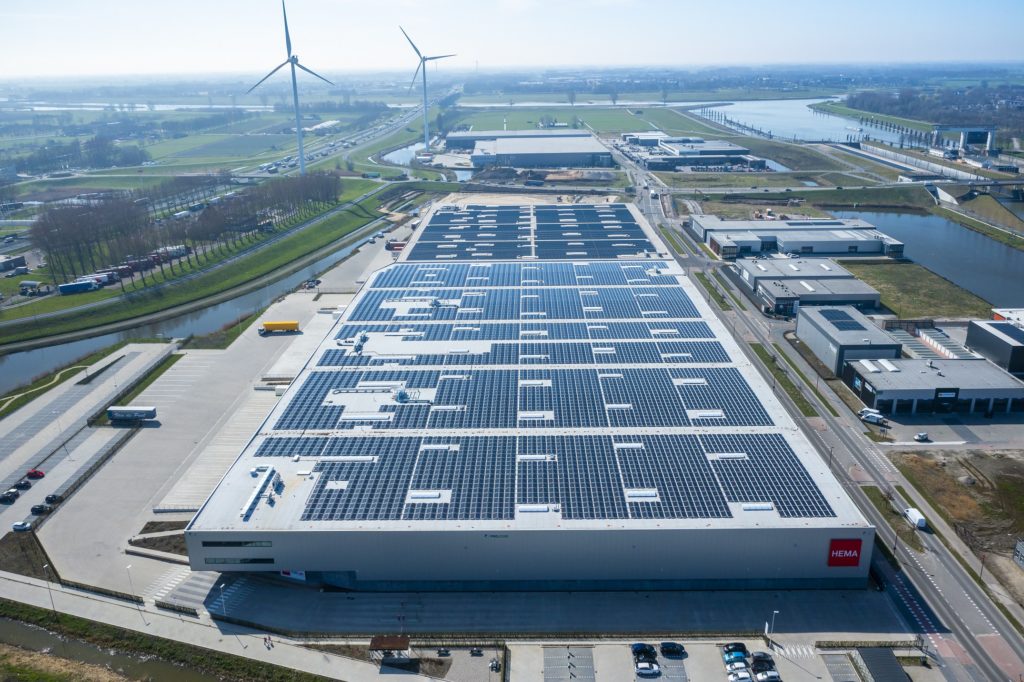
Battery technology
At the Prologis complex DC 5 in Tilburg – a total complex of 70,000 m2 – four megawatts of solar energy are being generated. Sunrock and Prologis have taken an extra step there: energy that cannot be used immediately is stored in a battery the size of a sea container. “Our energy networks are designed to provide households and businesses with power on a very small scale from large power plants. One-way traffic. The system is not built for the supply of energy back to the grid. In many places in the Netherlands, supplying energy back has become a complex matter. We can therefore produce solar, but will have to think up smart, very innovative solutions. That is why we like to talk about smart energy. Think of the creation of an energy hub, a place from which we supply energy to companies in the neighbourhood. Or think of new forms of storage. This is experimental, but we have found each other in a trial with battery technology in Tilburg. We know it has to be done. And it has to happen fast, because extra solar production is necessary to meet our climate targets in our country in ten to thirty years’ time,’ Van Oranje explains.
Breugelmans fully supports this solution. “The energy generated during the day can be used in the evening and at night to charge vehicles or provide energy for third parties. That’s great, but the meaning is broader. It is important to try out new solutions. That produces data that we can learn from. Besides, the energy transition is accelerating. Mobility is going to change. Many trucks and delivery vans are still running on diesel, but this is where a huge change is going to take place. In the vicinity of large cities, we are already seeing a demand for charging facilities. This transition will continue. So it is important to start thinking now about the charging infrastructure we will have to offer in the future.
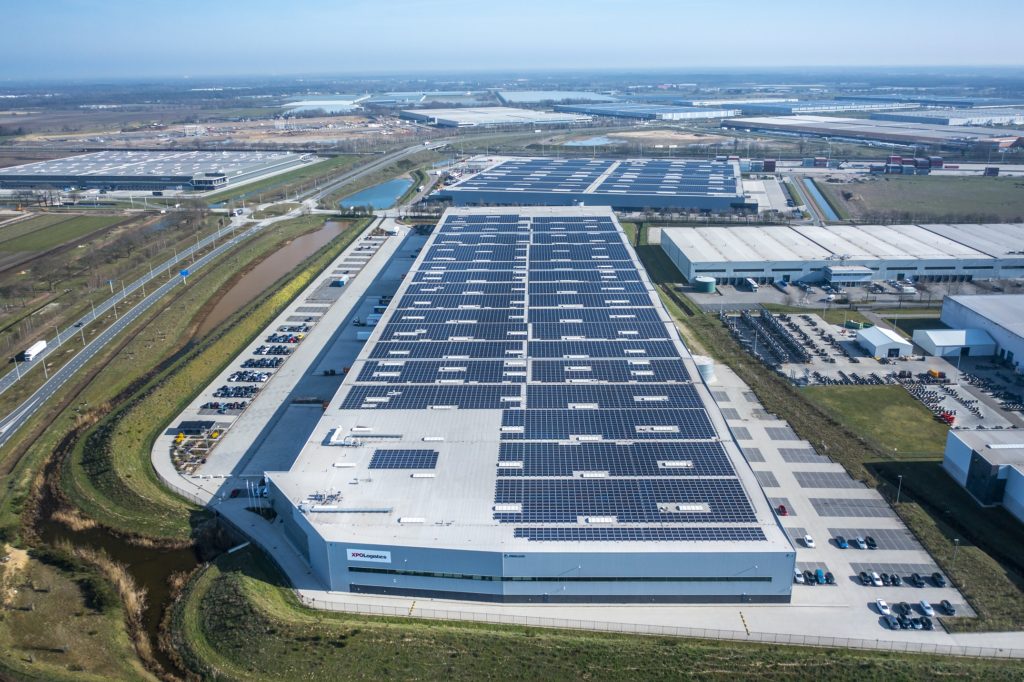
Sensible strategy
According to Breugelmans, this is part of a sensible real estate strategy. “We develop for the long term; we keep all those buildings in our own portfolio. They must also meet market demand in ten or fifteen years’ time. And then we have to experiment, we have to be prepared to make costly investments. Otherwise, we will not be ready for the future.
Is there a dream perspective? “Ultimately, we must be able to guarantee to fleet owners that power will always be available. Then we can help full throttle replace those diesel trucks with electric transport. Society cannot wait,” says Van Oranje.
